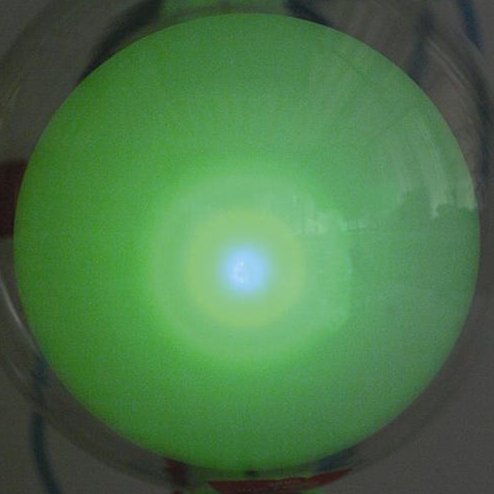Electron Diffraction System
Electron Diffraction System
TEL-2555SYS3
With the Electron Diffraction Tube one can verify the de Broglie hypothesis and establish the dual nature of the electron. In addition, one can calculate the interatomic spacings of carbon, (the diffracting material in the tube). (Cables are not included in the system.)
Also available is the same system but with the MCP power supply.
Quote2555SYS3
In 1922 de Broglie combined Planck's quantum energy idea with an analysis of the Theory of Relativity and proposed that since waves sometimes act as particles perhaps particles sometimes act as waves with a wavelength of h/mv. Three years later Davisson and Germer and later that same year J. J. Thomson's son provided experimental confirmation that electrons do act as waves.
With the Electron Diffraction Tube one can verify the de Broglie hypothesis and establish the dual nature of the electron. In addition, one can calculate the interatomic spacings of carbon, (the diffracting material in the tube).
The Electron Diffraction Tube emits from an indirectly heated, oxide coated cathode, a narrow converging beam of electrons. The inside surface of the end of the tube has a luminescent screen deposited on it. A micro mesh nickel grid, onto which graphite has been deposited, lies across the exit aperture of the electron “gun” (figure 1). As the electron beam penetrates this carbon target, the electrons are diffracted into two rings corresponding to separations of the carbon atoms. One can show that the wavelength of an electron λ=d sinθ. Additionally, from the geometry of the tube (figure 2), we see that θ=D/2L where θ≈sinθ for small angles, D is the diameter of the ring and L is the length from the graphite target to the luminescent screen. Combining the two equations one can show that the diameter of the rings is proportional to (V)^(-1/2).
A graph like the one in figure 3 is obtained by plotting (V)^(-1/2) vs. ring diameter. From the slope of the graph the interatomic spacings of carbon can be calculated.
(Cables are not included in the system.)
Figure 1
Figure 2
Figure 3







